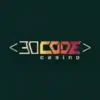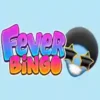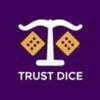What is the best approach-method when playing blackjack using the Table Master from Shuffle Master? Table limits are $5-$200 dollars where I play. My sole motivation is to win moderate amounts while playing and it appears to me that basic strategy may be a possible solution. Myles H.
The electronic multiple-player blackjack game you speak of, Myles, combines the latest interactive technology with the camaraderie of a live table game by using a life-sized video dealer on a large screen, and it can be played for as little as a buck a hand. Herein lies your first problem. Your table minimum of $5 seems a bit steep for the lunchbox flock who enjoy video-based gaming. Yes, I realize you’re in Atlantic City, while I’m in the woods of Northern Michigan, but for a video-based machine, $5 seems a bit pricey, especially when all I’m forking over is $1 a pop.
Being that the payoffs are effectively the same as those of a live game, yes, basic strategy is the smart way to go against a video dealer, but I’m also led to my second concern, and that is the speed of play. You’ve read it here before. Speed kills in a casino environment.
And why do you think casinos love Table Master video games? Because they can offer these games at a fraction of the cost of live tables: they can be placed where live games are not legal, they are dispute and misplay-free, virtual dealers don’t ask for holidays off and health care, and here’s the triple-barbed hook, Myles, the one that can really gobble up your gambling funds: Table Master games nearly double the number of hands played per hour.
Involving what’s called “incremental game speed,” the more often you are exposed to the built-in house advantage on a Table Master blackjack game (i.e. the more hands you play per hour), the faster the machine can tenderize, barbeque, and swallow your bankroll.
The best thing to do here, Myles, is to slow your play against these video game gizmos, and, if the table minimums are the same as on a live game, I would recommend the latter, and as the columnist always recommends, the use of basic strategy.
I believe in using perfect basic strategy at blackjack, with one exception. When the dealer shows a seven, and I have a 16, I stand. Although the basic strategy charts all tell me to hit that hand, it seems I bust and lose more often than not, so now I no longer hit it. Convince me I’m wrong. Henry P.
Being that you are guided by what “seems” to be an actuality, I’ll do the arithmetic, Henry, then let you decide whether you want to keep standing on a hard 16.
A dealer with a 7 as the face-up card will bust only 26 percent of the time. Subsequently, seventy-four times out of 100, the dealer who shows a 7 is going to make his or her hand. Standing on that 16, when you are going to lose all 74 of those hands and win only 26, tells me, Henry, that the upside potential is little and the downside risk substantial.
So what’s the math if you were to hit that nasty 16? Well, if you were to whack it, 38 percent of the time you will improve your 16 to at least a 17 or better, which puts you in a much better position than standing against the dealer with a 7.
Since there is more of an opportunity to improve your hand to a 17 or better than there is by waiting for the dealer to go bust, obviously I would recommend that you always HIT IT!
Gambling Wisdom of the Week: “The reason you’ll find different strategies from different experts is that they’re dealing with an art, rather than a science.” –Andrew Brisman, The Mensa Guide to Casino Gambling




















